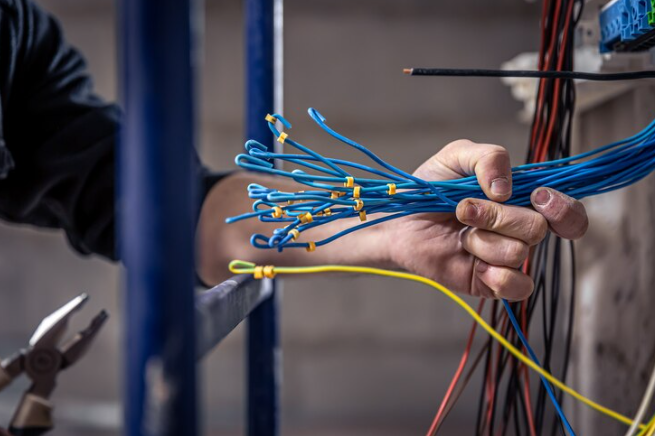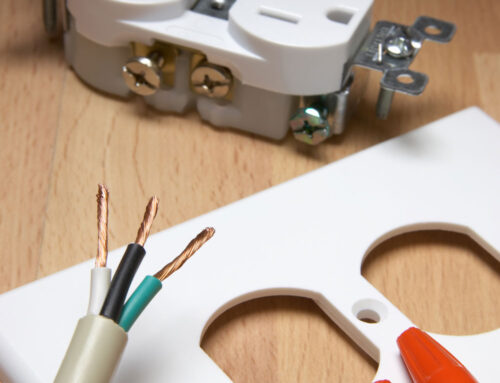
For a long time, the standard way to wire electrical systems has been to use high-voltage systems. But as technology gets better and people want to save energy, more and more individuals are choosing low-voltage solutions for their homes and companies. And why not? There is a clear reason why these solutions are becoming more popular.
But what does “low-voltage wiring” mean? What makes it different from regular high-voltage systems? And what are the advantages of using low-voltage solutions in homes and businesses?
This blog will take you inside the world of low-voltage wiring and how it can be used.
What is low-voltage wiring in a house?
Any electrical system that works at or below 50 volts (V) is said to have low-voltage wiring. This is significantly lower than regular high-voltage systems, which operate at 120 V or higher. Transformers are often used in low-voltage wiring to lower the amount of electricity coming from the main source. This makes it safer and uses less energy.
But what makes low voltage better than high voltage? Safety is one of the key considerations. There is less of a chance of getting shocked or starting a fire at lower voltages. Also, choosing low-voltage systems can save a lot of money on both installation and maintenance, making them a good choice for the long run.
What kinds of low-voltage systems are used in homes and businesses?
Buildings for People to Live In
Low-voltage wiring is used in many different ways in homes. Lighting systems, security systems, and communication systems including phones and internet connections are the most popular.
Low-voltage electrical lighting solutions are becoming more popular since they use less energy and can be used in many different ways. Homeowners can simply change the brightness and atmosphere of a room with the push of a button thanks to dimmers and smart controls. Low-voltage wiring also helps security systems since it makes them easier to install and work with other home automation systems.
Also, a lot of households now use low-voltage communication systems including phones, intercoms, and video devices. These systems use less power but still work quite well.
Buildings for Business
Low-voltage solutions have many uses in commercial buildings, just like they do in homes. Low voltage is utilized for HVAC systems as well as lighting, security, and communication systems. Building owners can save money on energy bills while still keeping the space comfortable for people who live there by employing low-voltage wiring.
Fire alarm systems are another popular use of low voltage in commercial structures. These systems are less likely to damage the building’s electrical parts in an emergency since they use lower voltages. Low-voltage wiring also makes it easy to install and connect with other building control systems.
Best Ways to Wire Low Voltage
Low-voltage wiring has several advantages, but it’s important to follow best practices to make sure the installation is safe and works well. Keep these important things in mind:
Take your time planning and designing the system: Planning and designing well are very important for the success of any low-voltage wiring project. This means figuring out what each part needs, knowing how the facility is laid out, and thinking about how it could grow or improve in the future.
- Use good parts: It’s important to spend money on good parts when building low-voltage systems. Not only do they work better and last longer, but they also save money in the long term.
- Follow safety rules: Even though low-voltage systems may be safer than high-voltage systems, safety should always come first. To avoid accidents and make sure the system works right, you need to follow all the safety rules and standards that apply.
- Label wires and cables: It’s crucial to label all of the wires and cables accurately because there are so many of them in a low-voltage wiring project. This will make it easier to fix things and keep them running in the future, which will save time and reduce misunderstandings.
- Make sure all parts are properly secured. Low-voltage systems are commonly used in places like ceilings and walls where there can be vibrations or movement. To avoid damage or disconnection from these motions, it is very important to secure all parts correctly.
- Use the right tools for the work: Always use the right tools for the job to make sure the installation goes smoothly and safely. These are wire strippers, crimpers, and testers for cables and wires.
- Check the system carefully: Before finishing the installation, you should check the whole low-voltage system carefully. This means checking that all parts, connections, and functions are working as they should.
- Keep records and paperwork: If you ever need to make repairs or upgrades to the low-voltage wiring installation, having detailed records and documentation will save you a lot of time and work. It also helps with finding problems and fixing them.
- Regular maintenance: Low-voltage systems, like any other system, need regular maintenance to work properly. This means looking for broken parts, loose connections, or old equipment.
- Think about hiring a pro: Doing things yourself can be enjoyable and save you money, but it’s always a good idea to think about hiring a pro for low-voltage wiring jobs. They know how to execute complicated installations and can make sure that the job is done right.
Following best practices while installing and maintaining low-voltage wire systems is important for their safety and efficiency.
Fixing Problems with Low-Voltage Electricity
Even if you do everything right, you may still have trouble with low-voltage electricity. Here are some frequent problems and possible fixes:
- Low voltage supply: If you see that lights or appliances aren’t getting enough power, it could be because the main electrical panel isn’t sending enough voltage. You may fix this by either updating the panel or adding a booster to raise the voltage.
- Voltage drop happens when there is a big distance between the equipment that is getting power and the source of electricity. It can cause lights to dim or appliances to not work as well as they should. You could try utilizing larger wires or putting a transformer closer to the device to fix this problem.
- Short circuits happen when two bare wires touch, which sends a burst of electricity that can hurt the wiring and any gadgets that are attached to it. To fix this problem, you need to check for loose connections and broken wires on a regular basis.
- Overloading: When too many devices are plugged into one circuit, it might cause the circuit to not have enough power. You can fix this by moving the gadgets to different circuits or adding more circuits.
More and more homes and businesses are choosing low-voltage wiring because it is safe, efficient, and cheap. Low-voltage solutions are a viable alternative to traditional high-voltage systems since they may be used in a number of ways and follow best practices.
But it’s crucial to keep an eye on possible problems and constantly maintain the system to make sure it works at its best. You can get the most out of your low voltage wire installation and have a safe and reliable power supply for years to come by following the tips in this post.
Give Us a Call for Expert Low-Voltage Wiring!
If you’re thinking of getting low-voltage wiring for your house or business, talk to a licensed electrician who knows how to do these kinds of jobs. They can give you professional advice on the best ways to meet your demands and make sure that your system is set up properly and correctly.
Don’t give up on the safety and efficiency of your electricity supply—look into low-voltage choices right now! So why not? Call our skilled electricians at Starnes Electric right away to get started on making your electrical system more contemporary, efficient, and affordable.




